Best Potting Mix Recipes
for Container Vegetable Gardening
Can you use potting mix for vegetables? What about Miracle-Gro? As I've previously addressed, potting mix is not the same as soil. Does that mean potting mix is unnatural or somehow bad for garden vegetables? Do you need organic potting mix for vegetables? What's the best potting mix for indoor plants?
A well structured potting mix will be relatively light and friable. It will have good drainage, allowing for proper aeration of plant roots. But it also holds water, preventing plants from drying out on hot summer days. It should also be stable, maintaining a healthy growing structure all season, or even into subsequent seasons.
- How to Make the Best Potting Mix
- What's the best potting mix for indoor plants?
- Structural Attributes of Potting Mix
- Potting Mix Component: Organic Matter (humus)
- Potting Mix Component: Inorganic Matter (silicates)
- Sample Potting Mix Recipe Ideas
- Seed Starting Potting Mix Recipes for Seedlings
- DIY Potting Mix Recipes for Container Gardening
- Potting Mix Recipes for Professional Nursery Plants
- The Best Soil For Growing Food in Containers
- Can You Use Potting Mix for Vegetables?
- Is Potting Mix Bad for Plants You Will Eat?
- What Company Owns Miracle-Gro?
- Is Miracle-Gro Potting Mix OK for Vegetables?
- Do You Need Organic Potting Mix for Vegetables?
Video: Best Homemade Seed Starting Potting Mix
Test / Review - Miracle-Gro, Espoma, Organic DIY
Stop overpaying for seed starting mixes! Learn how to make a DIY seed starting mix that's better than retail.
How to Make the Best Potting Mix
What's the best potting mix for indoor plants?
If you're trying to figure what special sauce is needed for making the "best" potting mix, then I have a little secret for you: There isn't one. There are countless recipes for potting mixes. Many of them can work quite well. But there is no single "best." In fact some mixes might be so specialized that they'll work rather well for some kind of plants while performing very poorly with others.
Fortunately, it's not hard to create a simple well-rounded potting mix that's flexible enough to grow just about any vegetable in your garden. When looking at a "potting" mix you are looking at a variety of components that each have their own unique physical characteristics. Water retention, drainage, pore spacing, wicking capability, resistance to decomposition. These are all things that must be considered.
Plants growing in a container have very limited access to moisture. Often their root systems span only a few inches of area. Add to this the extreme temperature fluctuations that occur in above ground containers and you have a recipe for water stress!
To keep up, the potting mix medium needs to provide consistent moisture. Additives like peat moss or vermiculite retain lots of water, ensuring your plant stays hydrated. Thus, they have been used by the horticultural industry with great success for decades. But they may be prone to compaction or lack good pore spacing.
Pores or small air gaps in a potting mix allow a plant's root to access oxygen which the plant needs during respiration. So wood bark or perlite are commonly included to provide the needed aeration. These physical characteristics must be balanced out before going to the next step of pH adjustment and fertilization.
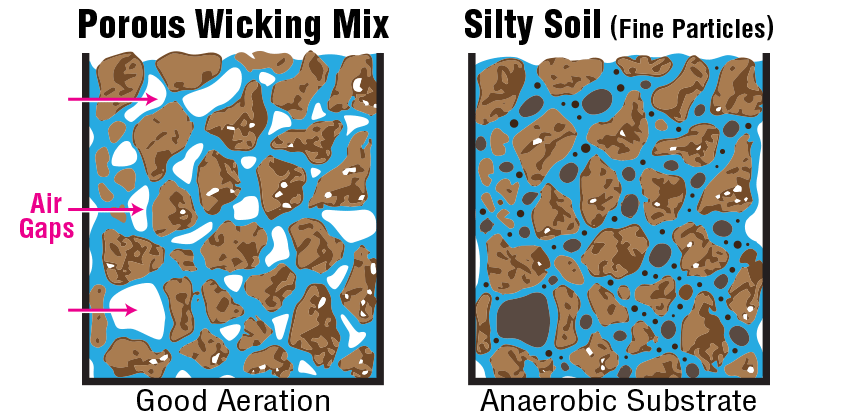
The larger particle size of potting mix increase aeration allowing for healthier plant roots during wet conditions.
Structural Attributes of Potting Mix
Potting mix (and in-ground soil) components can be grouped into 3 basic categories:
1) Inorganic Matter (silicates)
2) Organic Matter (humus)
3) Organic Matter (decaying)
INORGANIC (NON-CARBON BASED) MATTER is not prone to bacterial breakdown and decomposition. Particle size could range from small (sand / perlite) to much larger particles (pumice / expanded clay / growstones). Inclusion of inorganics may provide a source of trace minerals. But most often, inorganic components are selected for their physical properties. They may prevent compaction, improve drainage, improve aeration and even help to retain nutrients.
HUMIC ORGANIC (CARBON-BASED) MATTER has already gone through its initial stages of degradation. The remaining material has reached a point of relative stability. Humus often provides the bulk of potting mixes. It does not lose volume as fast as decaying matter. And since it is stable, it does not tie up nitrogen, causing nitrogen draft.
DECAYING ORGANIC MATTER is the primary source of nutrients in conventional, in-ground soil. Examples include kitchen scraps, grass clippings and leaves. From such matter we get, traditional compost and vermi-compost (from worms). Composts could be incorporated into a container. However, the required volume will alter the structure of your potting mix. Attention should be given to the effects on drainage, aeration and water retention. Many container gardeners avoid using compost in pots. If you are wanting to include it, vermi-compost is the best candidate and has been shown to work well.
In contrast, organic fertilizers are more potent than compost and can be more easily included in a container mix. Examples include: dried blood, bone meal, kelp, fish emulsion and guano. These require a smaller amount and will not significantly impact the physical characteristics of your mix.
Organic Matter (humus):
PEAT MOSS [ SPHAGNUM ] - biodegradable, mechanically harvested from wetlands. Water retaining additive for soil or potting mix. It is derived from peat formed by decomposed sphagnum moss. The top layer of living sphagnum moss is removed. The underlying sphagnum peat, which is dead material, is then harvested. Colors will progress from light to dark to black as it decomposes. It is acidic with a pH 3.5 to 4, but may be balanced with limestone before being sold to the customer. Repels water if allowed to dry out. Too much peat moss can lead to soil compaction.
COIR [ COCO ] - biodegradable, industry by-product. Water retaining additive for soil or potting mix. Derived from coconut fibers, it resembles peat moss but is more granular and void of twigs or sticks. The pH ranges from 5.5 to 6.8, with higher potassium, sodium, and chlorine levels. Coir does not break down as quickly peat, but may be more expensive, depending on where you live. It has greater water retention and doesn't repel water like peat can. When fertilizing you may need to use less potassium and more nitrogen. Also, purchase only low-salt coir products to minimize risk of salt damage.
COMPOSTED PINE BARK - biodegradable, industry by-product. Additive for soil or potting mix. Pine bark can increase drainage and improve aeration by increasing air space. Composted pine bark is slightly acidic with a pH often ranging from 5.0 to 6.5. Being partly composted, it has already begun to break down and stabilize. Pine bark is a good choice due to its high lignin content. Lignin takes longer to decompose. In contrast, the inner wood of a tree contains higher levels of cellulose, which breaks down quickly and depletes nitrogen in the process. You may still need extra nitrogen supplementation with pine bark, but it is a viable additive for mixes. It can be very cost effective too, depending on local availability. Use only dark, shredded bark, free of dyes. I recommend pine, 1/8" to 1/2" pieces.
Inorganic Matter (silicates):
PERLITE - non-degradable, mined volcanic glass (SiO2) which is super heated and expanded. Perlite is a very common additive for soil or potting mix to enhance drainage & aeration. Used more often with containers, perlite is produced from volcanic rock that is heated and expanded into a hard, lightweight, white material. It is sterile and pH-neutral. Adding perlite results in tiny air tunnels for water and air to flow freely to plant roots. It is much lighter than sand and the preferred solution for drainage in container gardening. Perlite can hold from three to four times its weight in water without getting soggy.
VERMICULITE -non-degradable, mined aluminum-iron magnesium silicate. Added to soil or potting mix because of its water retaining properties (220 to 325% by weight). The pH is basically neutral (7.0) but it contains carbonate compounds, which can result in alkaline characteristics. So a typical pH in water can range from 6 to 9. Particles are flaky & can break into smaller pieces if the soil is mixed too much or handled roughly, leading to compaction. Mel's Mix is a common raised bed formulation which uses 1/3 vermiculite.
SAND -non-degradable, available as feldspathic sand or silica sand. Sand is not commonly used in retail potting mixes. Although some DIY mixes might call for sand in their recipe, sand does not perform as well as perlite when it comes to aeration and moisture retention. Particle size will make a difference. Regardless though, sand is much heavier, and will greatly increase the weight of your container. This is useful for top heavy plantings that are prone to being knocked over in strong winds. Rather than resorting to sand, I simply select larger containers that have a wider more stable base.
Sample Potting Mix Recipe Ideas
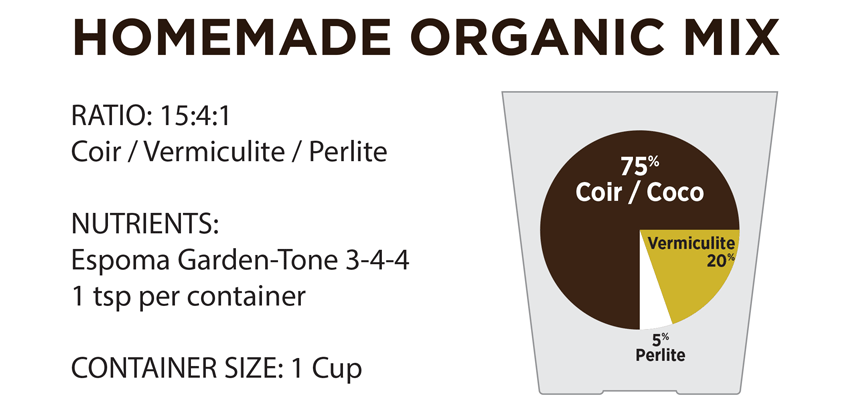
My organic DIY potting mix recipe for vegetables outperformed Miracle-Gro seed starting mix.
Seed Starting Potting Mix Recipes for Seedlings
- High Absorption Seed Starting Mix:
- 1 part Perlite
- 4 parts Vermiculite
- 15 parts Coir / Coco
NOTES: A simple effective potting mix recipe is to use 75% Peat Moss + 20% Vermiculite + 5% Perlite. It is easy to rehydrate in the event that it completely dries out. This mix is especially good for a sterile potting mix that will be used indoors. This infertile mix requires you to also add fertilizers. Otherwise, you can water with a liquid fertilizer once seeds have germinated.
- High Aeration Seed Starting Mix:
- 1 part Perlite
- 1 part Vermiculite
- 1 part Peat Moss
NOTES: This recipe is perfect for starting seeds indoors, as it provides a light, fluffy medium that allows for good drainage and aeration. This mix also requires you to also add fertilizers or water with a liquid fertilizer after seed germination.
- Compost-based Seed Starting Mix:
- 1 part Perlite
- 1 part Vermiculite
- 1 part Screened Compost
NOTES: This recipe is great for starting seedlings as the compost provides natural nutrients that can help give seedlings a healthy start. However because composts can vary greatly from batch to batch, there may be some variability in your results. Also, this mix is not sterile. It may contain weed seeds or even pathogens.
To ensure that the potting mix is sterile so that no diseases or pests are introduce, you can sterilize your potting mix. To sterilize the mix, heat screen compost in an oven at 180°F (82°C) for 30 minutes or until it reaches an internal temperature of 160°F (71°C). This is only needed for seed starting mixes and only works in relatively small batches. Be aware that it might stink up your kitchen!
DIY Potting Mix Recipes for Container Gardening
- Mel's Mix:
- 1 part Peat Moss
- 1 part Vermiculite
- 1 part Compost
NOTES: Surprisingly, I've tested Mel's Mix outdoors in a self-watering 5 gallon bucket planter and had good results. To make Mel's Mix you simply need 33% Peat Moss + 33% Vermiculite + 33% Compost. Because this contains compost, you will not need to add any fertilizers or additional nutrients. Be careful with compost though. I used a screen homemade compost that had a significant amount of woody products.
- Vermicompost-based Potting Mix:
- 2 parts Vermicompost
- 1 part Perlite or Vermiculite
- 1 part Coconut Coir or Peat Moss
- 1/2 cup Dolomite Lime per 5 gallons of mix
NOTES: Vermicompost is a nutrient-rich organic fertilizer made from worm castings, and it can help provide essential nutrients to your plants. This recipe is suitable for a wide range of plants. The specific ratios of each ingredient may vary depending on the needs of the plants being grown and the specific conditions in which they will be grown
- Peat-based Mix:
- 70-80% Peat Moss
- 10-20% Perlite
- 10% Vermiculite
NOTES: This soilless potting mix recipe is commonly used for a wide range of plants and is suitable for both indoor and outdoor gardening. You can add either an organic or a slow-release fertilizer, to help ensure optimal growth and plant health through the growing season.
Potting Mix Recipes for Professional Nursery Plants
- Bark-based Mix:
- 50-70% Pine or Fir Bark
- 20-30% Peat Moss
- 10-20% Perlite
NOTES: Tree barks can make excellent substrate in potting mixes. They are also a good way to cut down on costs. The specific ratios of each ingredient may vary depending on the needs of the plants being grown and the specific conditions in which they will be grown. In addition to adding a slow-release fertilizer, some plants may benefit from the addition of dolomitic lime for pH adjustment.
- Bark & Sand Potting Mix:
- 2 parts Pine Bark Fines
- 1 part Coarse Sand
- 1 part Vermiculite
- 1/2 cup Dolomite Lime per 5 gallons of mix
NOTES: By adding sand to this potting mix, the containers are extra heavy. This is useful for taller plants which can become top heavy and might easily blow over during wind storms. Add a slow-release fertilizer to nourish plants.
- Coir-based Mix:
- 80-90% Coir
- 10-20% Perlite
NOTES: This is a very simple two ingredient potting mix. It's important to source coir that has been properly flushed of salts. In addition to fertilizer, some growers will also buffer the coir by soaking it in a solution of Cal-Mag.
The Best Soil For Growing Food in Containers
Can You Use Potting Mix for Vegetables?
Many growers might understand that they need a good potting mix for growing indoor plants. They may even understand that potting mix works best for outdoor container gardening. But "gardening" might simply mean making nice floral and ornamental plant arrangements. It doesn't necessarily mean growing plants you intend to eat.
Can you use potting mix for vegetables grown for food? Yes! Absolutely. This is especially imperative for vegetables grown in a container garden. The components used in a quality potting mix can yield much better results than simply using native soil. Some people are amazed when they first discover how large and healthy their vegetable plants can get in just a basic pot filled with fertile potting mix.
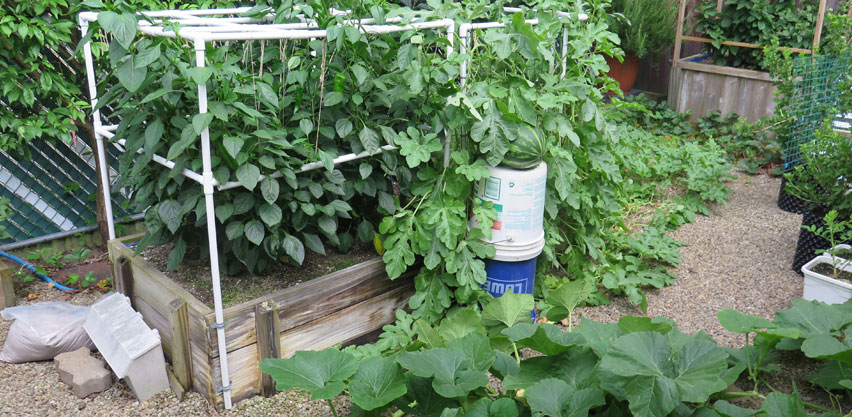
All of my wicking beds are filled with potting mix which supports large productive harvests!
If you select a large enough container, you can enjoy a bountiful harvest of vegetables all season long. The improved drainage characteristics will keep your plants healthy even during extended periods of rainfall. But during droughts, your potting mix can also hold enough water to keep your plants hydrated. Of course, a self-watering reservoir can help even further to ensure water doesn't run out.
Is Potting Mix Bad for Plants You Will Eat?
Some people have the mistaken idea that potting mix is somehow "bad" for plants that will be eaten. Cautious gardeners think seriously about plants grown for food production. Nobody wants to eat something that will be harmful in some way. Are vegetables grown in potting mix ok to eat?
Generally speaking, yes they are. In fact, vegetables grown in containers filled with potting mix may even be SAFER than ones grown in the ground. In many urban areas, residents have concerns over toxic contaminants in their soil, especially heavy metals like lead. Container gardening with potting mix allows a gardener to import uncontaminated growing medium which is safely isolated from the native soil.
I don't want to breed paranoia here. But the idea is that potting mixes are not inherently bad or unsafe. They are typically comprised of safe components that are not toxic or contaminated. It's common to see things like peat moss, coir, perlite and composted forest products. You can even look up the retail bags that you intend to purchase to ensure they've been tested for low levels of heavy metals.
What Company Owns Miracle-Gro?
IS MIRACLE-GRO OWNED BY MONSANTO? The first thing you need to know about Miracle-Gro, is that it is NOT Monsanto. Lots of gardeners (and the public in general) strongly oppose Monsanto and everything the company stood for. Although Monsanto was purchased by Bayer in 2018, people still throw around the word Monsanto like it's a derogatory term. That's all well and good, but what does this have to do with Miracle-Gro? Nothing. Monsanto does not own Miracle-Gro. The Miracle-Gro brand is owned by ScottsMiracle-Gro.
The primary link between ScottsMiracle-Gro and Monsanto deals with Roundup, a non-selective herbicide sold to consumers. Monsanto had owned the rights to glyphosate (the active ingredient in Roundup) and ScottsMiracle-Gro was licensed to market and distribute that product. Many gardeners have bitter disdain for Monsanto and they don't support the use of Roundup. I share those sentiments. If this applies to you, then you can avoid buying Roundup or any other herbicides.
SHOULD YOU BOYCOTT MIRACLE-GRO? Just because ScottsMiracle-Gro sells Roundup, does that mean you should avoid the entire company and everything it sells? You may choose to do so. But what are you truly accomplishing? And do you also boycott any brick and mortar stores that sell Roundup? I can find the product on store shelves at Ace Hardware, Lowes and Home Depot. Should I blacklist those stores for the greater good? The choice is yours, but don't feel compelled to push your views on others out of some misplaced safety concerns.
Is Miracle-Gro Potting Mix OK for Vegetables?
As discussed already, Miracle-Gro is simply a brand. It's not a single product. Even within the scope of potting mixes, there is the normal Miracle-Gro potting mix and also the Moisture Control version. These mixes may vary slightly depending on the region where they were produced and sold. Those common mix formulations are not organic. That being said, there's no real reason to avoid growing your food in them, if you want to use them.
HEAVY METALS: Take, for example, concerns over heavy metal contamination. Some overzealous gardeners turn their noses up at the entire Miracle-Gro product line. They use fear mongering to imply that the potting mix is full of industrial chemicals and is unsafe. But you can look up the chemical analysis for yourself. The Miracle-Gro Moisture Control Potting Mix (0698-0052) has been shown to contain 21 ppm of lead. Is that good? Is it bad? Well according to the University of Maryland Extension when "gardening in soil with total lead levels 50 ppm to 400 ppm," "all vegetable and fruit crops can be safely grown." The MG potting mix is at a mere 5% of that upper threshold. So certainly from the lead perspective it's quite safe!
IS MIRACLE-GRO INCOMPATIBLE WITH ORGANIC GARDENING? It's true that many Miracle-Gro products do not conform to organic standards due to the use of synthetic fertilizers. However the Miracle-Gro product line also includes ORGANIC products. You can even find a list of many Miracle-Gro products which are OMRI listed and formally approved for organic gardening. This means there are viable product options for staunch organic gardeners.
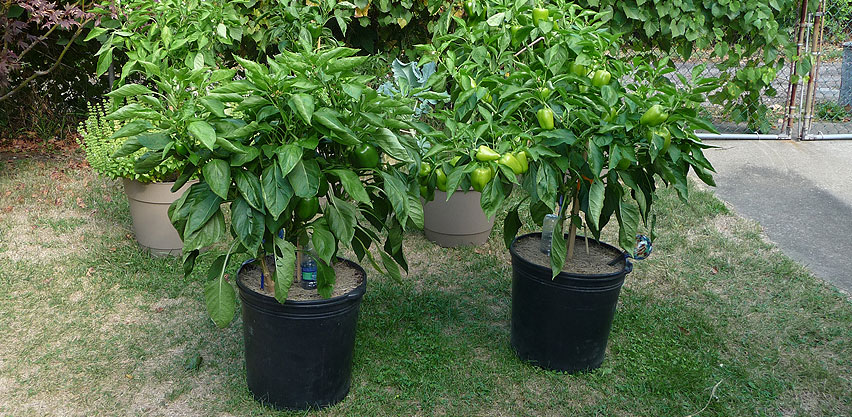
These healthy pepper plants were extremely productive with the help of some Miracle-Gro potting mix.
Do You Need Organic Potting Mix for Vegetables?
Although home gardeners are rightly wary of heavy metals and other toxic contaminants in their soil, many go even further. It's common to see plenty of opposition against synthetic fertilizers. Such nutrient inputs may be referred to as "chemical" fertilizers as a way of disparaging them. Some gardeners insist that you need to go "organic" for any plants that you intend to eat.
Organic agriculture has plenty of benefits. I strongly support it from the perspective of using less pesticides or herbicides. Certainly those are chemicals that we don't need to be consuming as humans. But from a nutrients standpoint, synthetic fertilizers are not inherently bad or toxic in some way. This is best exemplified by the decades of research into hydroponic and aeroponic gardening. Most often, those production systems allow you to safely grow vegetables without any soil what-so-ever.
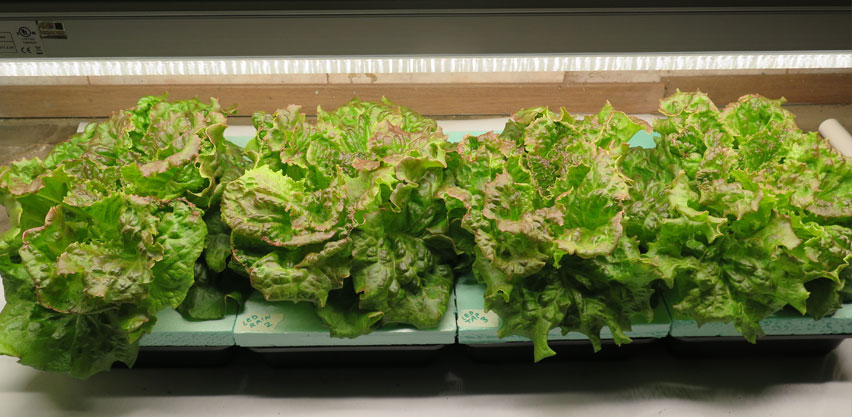
Hydroponic lettuce grown in synthetic nutrient solution tastes delicious & is healthy to eat.
Really, the decision to use an organic potting mix is a matter or personal preference. You shouldn't need to worry about heavy metal or toxic contaminants. Pesticides and herbicide usage is not a concern. It's primarily a matter of what source of nutrients you prefer.
The majority of my nutrient inputs are organic. But I don't have some morbid fear that a synthetic fertilizer will pollute my vegetable crops. Interestingly, even Miracle-Gro offers an organic version of their potting mix targeted specifically at home gardeners who are trying to be purists. I think the stuff is over-priced. But it's certainly an option if you're looking for an "organic" retail potting mix.
More importantly, be sure you are using some sort of a potting mix in your containers. It doesn't have to be organic. But if you want your vegetables and other plants to grow strong and healthy, then they need some sort of potting mix. Don't use a top soil, bagged manure or anything that gets soupy when mixed with water. The larger particle sizes of a potting mix will go a long way in promoting plant health.

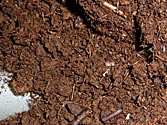
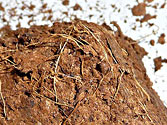


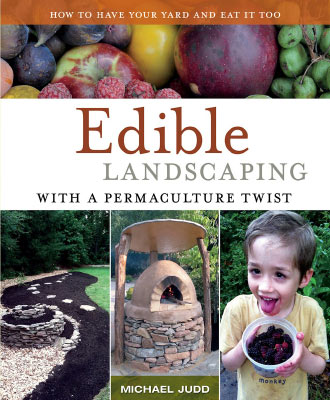
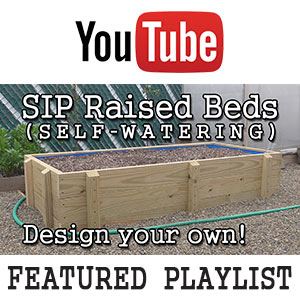
![GARDENERS: Who else would pay money for poop? [Gardening T-Shirt Design]](images/GARDENERS--Who-else-would-pay-money-for-poop_Gardening-Tshirt-th.jpg)